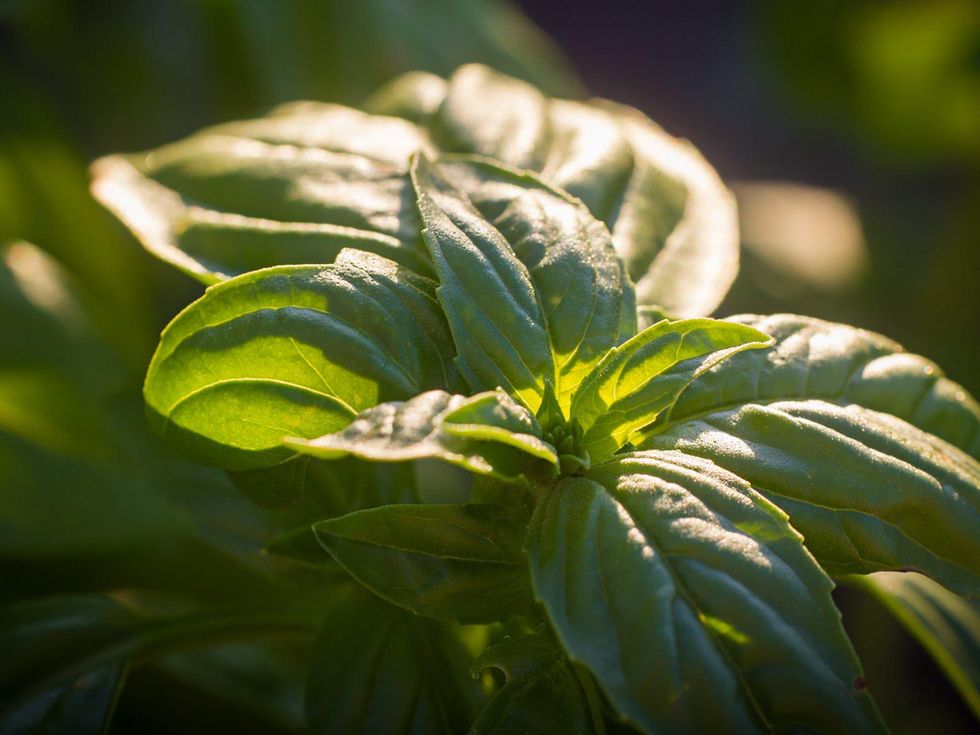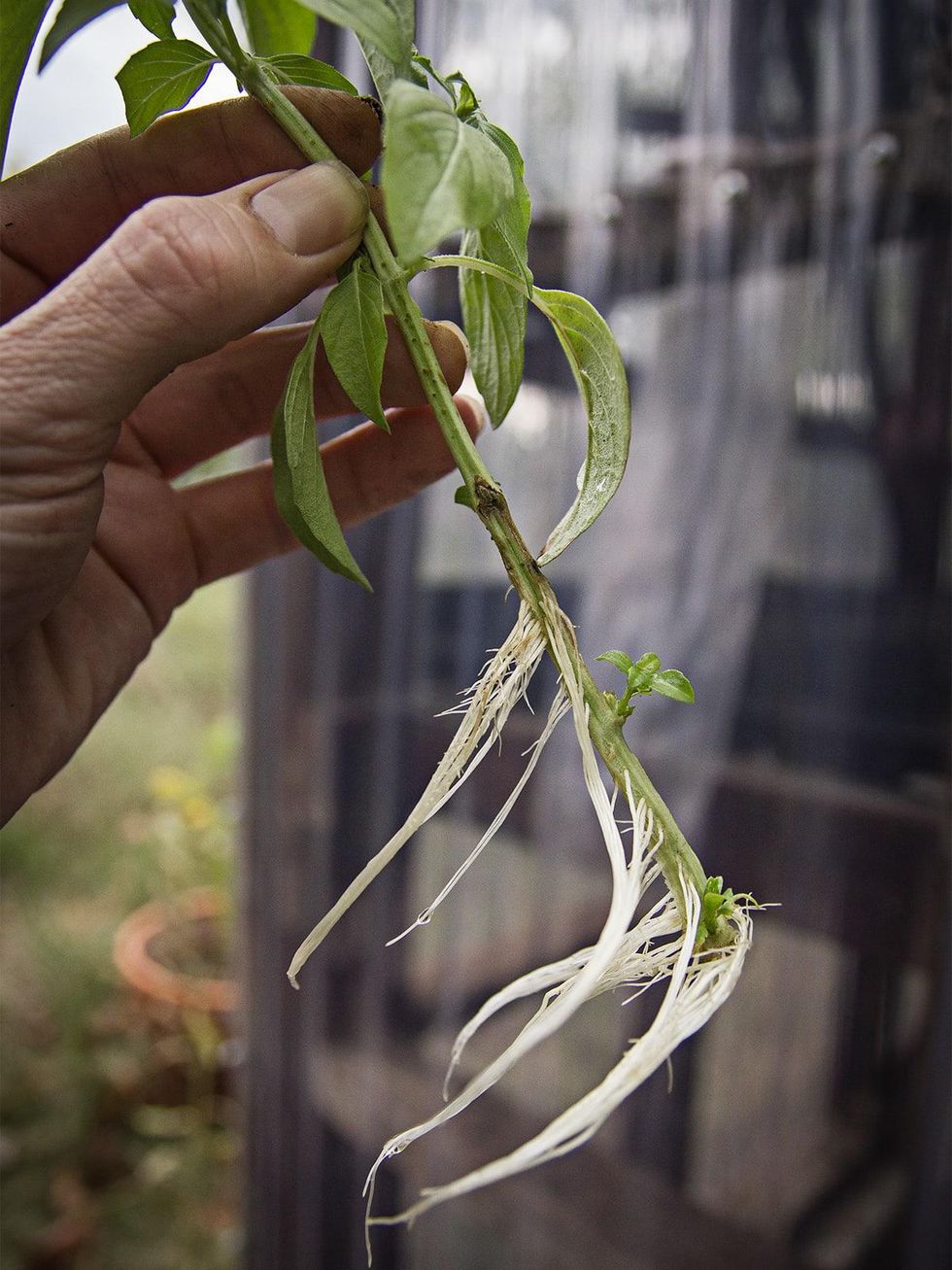The Farmer Diaries
North Texas farmer expands palate with popular pizza-friendly herb
My life before basil was dull. I ate pasta sauce from a jar and pizza sauce from a can, not knowing just how unsavory my existence was. Then one day, I tried fresh basil from the grocery store. It was an early step in my culinary journey that led me to try more new foods. My blinders were removed; my mind was open.
My next step was to grow my own basil, whereupon I discovered how much better it was than store-bought. The difference between the flavor and aroma of basil cut fresh from my yard and the wilted fresh basil at the store is like the difference between watching a movie at the theater and on a phone. One you experience; the other gets you familiar with the plot. This is why I strive to keep my own stash of truly fresh basil at my disposal throughout the year.
The difference between basil cut fresh from my yard and the wilted fresh basil at the store is like the difference between watching a movie at the theater and on a phone.
In recent years, I've supported my basil habit with more varieties: lemon, lime, purple leaf, lettuce leaf and Genovese. All have distinct flavors. All are easy to grow in Texas. Basil has few pests. It thrives even in the hot drought of summer with a little supplemental water.
In the spring and summer, all I do is plant the seed and watch it grow. For late fall and winter, however, there's more to it. Basil is the first to die, almost at the mere mention of frost. When frost bites basil, its leaves turn black and it becomes useless.
I learned the hard way during an unusually early frost in October 2012. It wiped out my basil before I had taken any measures to protect or store it. So now, I let pumpkins remind me to get my basil stash ready for chilly weather.
First, I ensure that I have several pots of basil growing in a protected greenhouse or windowsill. From the youngest plants in my garden — ones that haven't flowered, gone to seed, and become woody and tough — I take cuttings from green stems.
The cut should be made just below any place where the stem branches out with leaves. This is the location where unique, embryonic tissue can grow out into any other part of the plant: branches, leaves or roots. On a cutting about six to 10 inches long, I pinch off the bottom third of leaves and place it in a jar of water that covers the bare part of the stem.
In about two weeks, the stem has a new set of roots. This new plant may be potted in a clay pot full of potting mix or compost and grown just like a house plant wherever there's bright sunlight. When it's time for a pizza or pesto, I can pinch a few leaves off the top of the plant, which only makes it bushier in time, not sparse.
Try dried
Things can go wrong in a greenhouse, though. Cats knock over pots. Temperatures plunge below a heater's capacity to keep the facility warm. I neglect to water. Therefore, I have found that another backup is a good idea: dried basil.
Though not as flavorful as fresh basil, dried basil still outperforms the grocery store spice jars and costs nothing.
Though not as flavorful as fresh basil, dried basil still outperforms the grocery store spice jars and costs nothing. What's more, I sometimes prefer the mellow flavor of dried basil for some dishes, especially pizza. So it's both a backup for the fresh basil and its own thing with its own purpose.
To create a stash of dried basil, I again select younger plants with greener stems and few flowers. Using pruning shears, I cut down the plant right at the base where the main stem meets the ground and turns into roots — like chopping down a tree.
If I'm lucky, I'll find some stems trying to branch out at the base. By cutting just above these new branches, I give the plant a chance to bounce back and produce a supply of leaves right up to the day that frost stops everything.
After I cut down the basil plant, I inspect it for dirt, pests or spiders that need to be rescued and placed back out in the garden. I tie twine to a couple of the lower branches and hang the whole plant, upside down, in a closet or anywhere that's cool, dark and dry.
For added protection, the plants may be placed in cloth sacks; I don't, though. In about a month to six weeks, the leaves will be brown and crispy.
Whenever I want to add dried basil to a dish, I pull off a couple of leaves and sprinkle them over the food. The dried plant may be simply stored in situ, or the leaves can be broken off and stored whole in an airtight container once the plant is wholly dry. Because the flavor oils of basil break down when they contact air, whole leaves tend to retain more flavor than ground leaves.
Fresh from the potted plants in my greenhouse or from my own, whole-leaf dried cache, homegrown basil beats the supermarket knock-offs any day. With a little planning, I can enjoy it year-round.




